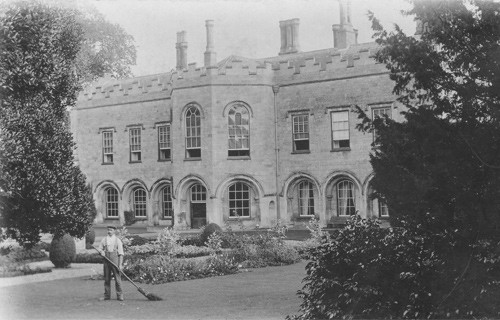
Here at Holmewood Hall, we don’t just offer a beautiful spot to say “I do”. Behind our venue’s stunning good looks is a lot of history, with much of the mesmerising hall you see today dating back to 1873. The story of Holmewood however goes back much further, which means history-loving couples looking for a scenic place to celebrate their nuptials fall in love with the site even more.
We thought we’d dedicate this blog post to just that, taking a look back at the history of the hall and the surrounding lands in greater detail.
A historic site with very royal roots
It was back in 1611 that the story of Holmewood Hall first began. During this period, it was sold by the Crown to Sir Robert Cotton. Cotton was the 1st Baronet of Connington and had already taken residence within nearby Conington Castle, which he rebuilt and transformed into his family seat. Sir Cotton was an esteemed individual who was an established antiquarian as Geni details:
“Best known for his collection of manuscripts, one of the foundation deposits of the British Library, Cotton was a significant early modern antiquary, whose library and antiquarian pursuits have attracted considerable scholarly attention. He was also a political figure of moderate importance, although this aspect of his life is more difficult to document, as his personal papers and most of his outward correspondence are now lost.”
He was also anti-royalist by nature, and actively supported the claim of King James VI of Scotland to succeed Queen Elizabeth I. Sir Cotton was also descended from the Scottish royal line and was connected through marriage to Robert the Bruce, the early King of Scots.
The fens were drained to make way for the first house
In 1630, work began to make the Holmewood site suitable for development. The ‘Gentleman Adventurers’, a group of wealthy landowners that were led by the Earl of Bedford, took on the epic task of draining the fens that originally occupied the land that Holmewood currently stands on. It wasn’t until 14 years later that the first house was constructed at Holmewood.
The Wells family were Holmewood’s next owners
The Cotton family went on to sell the manor to London merchant Thomas Truman. After his death in 1769, Truman passed all of his Huntingdonshire estates (including Holmewood Hall) to Elizabeth, his niece, and her husband William Wells.
The Wells family, who were responsible for much of the hall you see today, would go on to build a legacy that still lives on in the present day.
A second house is built at Holmewood
Using their skills as famous shipbuilders, the Wells family got to work constructing a second, much grander house on the Holmewood Hall site in 1775. Whilst much of this building was replaced at a later date, some of the sash windows found to the North aspect of the hall remain. The laundry, stables and coach house to the rear of the hall were also built during this period.
Holmewood Hall was officially born
Almost a century later, work began again on site, with architect William Young appointed by William Wells in 1873 to lead the alteration and extension of the existing structure. With a love of the Tudor Gothic style, the house and grounds were shaped and became virtually unrecognisable from the buildings that had stood there previously.
The finished hall, which has been beautifully restored and preserved to this day, didn’t strictly follow the Tudor Gothic style, however. The great hall and staircase were inspired by the Jacobean era, whilst the original drawing room was transformed into the venue’s iconic and still spectacular Gold Room.
The Wells family legacy lives on
Following the death of Sir William Wells in 1889, the house was passed onto Lord de Ramsey of Ramsey Abbey and then to John Ashton Fielden, one of the richest men in England due to his family’s links to cotton manufacturing. Four decades later, Holmewood Hall took on a very different role in wartime Britain and was used as a base for the US Office of Strategic Services (OSS).
In 1944 however, the Wells family returned to Holmewood, with descendant Sir John Wells purchasing the site with hopes to restore it, a dream that he was, unfortunately, unable to achieve due to the poor state of the house. In 1951, the house and wider estate were purchased by British Sugar, part of which was sold back to the Crown.
Fast forward to 2019, and the hall became part of the Country House Weddings portfolio, where it has remained ever since to be admired for its history and beauty by marrying couples and their wedding guests as a venue.
Want to discover more about Holmewood Hall’s history? Come see it for yourself. Book your viewing appointment today.
